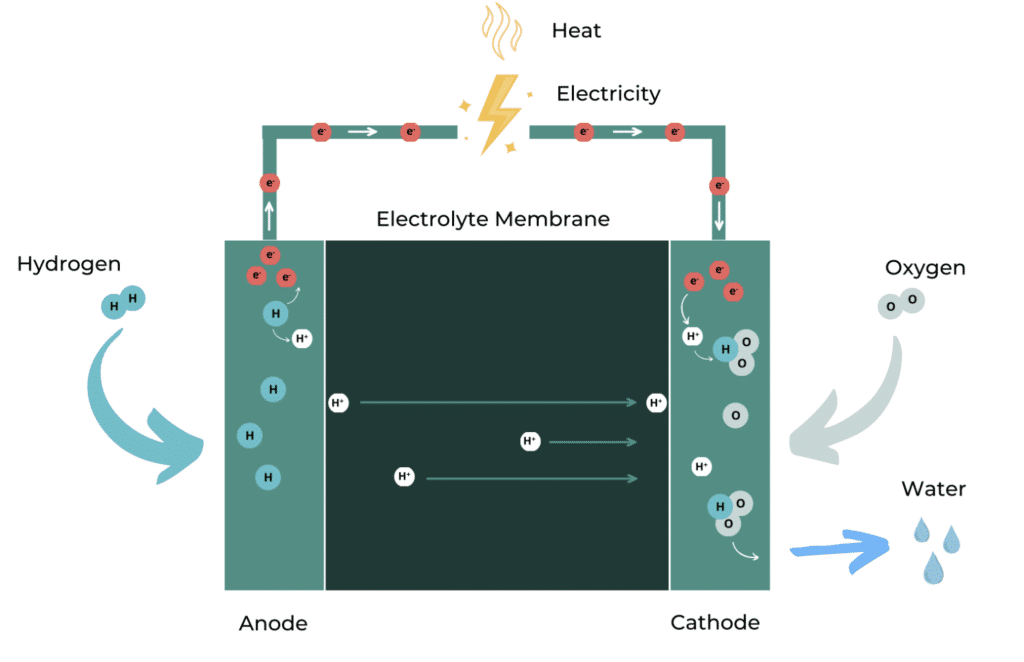How does a fuel cell work ?

Understanding a fuel cell might seem taunting at first, but at the end, it is just a question of chemistry. The fuel cell mechanism is easy: convert chemical energy into electrical energy.
To solve this equation, the fuel cell is composed of two components, the bipolar plate, a key component in PEM fuel cells which diffuse gases, and a membrane electrode assembly (MEA). This MEA made of multiple layers, is composed with an electrolyte membrane and assembled on one side with a catalyst layer of anode, a oxidizing electrode that releases electrons, and on the other with a catalyst layer of cathode, a reducing electrode that acquires electrons. Hydrogen is injected in the fuel cell on the anode side while oxygen (from air) is passed through the cathode. Once the hydrogen reaches the catalyst layer in the MEA, the hydrogen molecules split into electrons and protons.
An important thing to keep in mind before moving on to the next step, is that protons are positive electrical charged particles, while electrons are negative charges. All electrical charges collected on the bipolar plate represent the available electrical energy.
The membrane has the role of electrolyte in the cell and allows only the protons to pass from the anode side to the cathode side. This means that the protons, once separated from their electron counterparts, are free to make their way through the membrane, while the electrons remain trapped on the anode side. For the atoms to be equalized, the meeting of both particles is crucial. The electrons are then forced through a different circuit to reconnect with the protons, and while these travel, the flow of electrons generates electricity and heat.
Once it reaches the cathode side, the electrons reconnect with the protons and with the injected oxygen producing water molecules (H2O) which are then ejected as waste from the fuel cell. This means that any type of machinery or transportation currently consuming gas to produce energy, could replace its combustion engine by a zero-emission, sustainable power source. A sign of hope for a decarbonized future.
